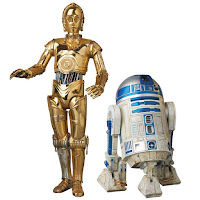Week 4 Blog
http://egypt.mrdonn.org/mummies.html
This week’s lectures on the human body and the influence of science technologies on medicine. It was cool to see how throughout time human bodies have been an inspiration for many artists. From the ancient Egyptians to Renaissance artists, the human body has been the center of many cultural traditions and art works. Anatomy and dissection have been a key intersection point for art and science. In ancient Egyptian culture the process of mummification a dead body was crucial in ensuring a prosperous afterlife for royal families. During the time of the Renaissance scientists were starting to explore the human body in a different way than before. They began to dissect dead bodies in order to discover the inner mechanisms of the human. They wanted to document the images they were seeing so they would have an artist come in and sketch for the scientists.
 In high school I was required to go to the Bodies exhibit for extra credit in my senior anatomy class. This exhibit displays well preserved human corpses without their skin in different poses. It was funny to me to see these bodies on display like great works of art in a gallery. This was an experience like nothing I had ever seen before. I was half amazed at all of the cool aspects that make up the human body and half horrified that I was in a room filled with dead corpses.
In high school I was required to go to the Bodies exhibit for extra credit in my senior anatomy class. This exhibit displays well preserved human corpses without their skin in different poses. It was funny to me to see these bodies on display like great works of art in a gallery. This was an experience like nothing I had ever seen before. I was half amazed at all of the cool aspects that make up the human body and half horrified that I was in a room filled with dead corpses.
http://www.toledoblade.com/local/2011/09/08/Bodies-Revealed-exhibit-extended-to-Nov-6.html
 The exhibit at the Bodies museum is the perfect example of how science and art intersect. Each display was carefully thought out with the position, stance, and posture of each body. The people who worked to create this exhibit obviously put a lot of time into the exhibit and care greatly about the importance of a body being viewed as a work of art. I think that this is an important message for people to receive. Artists spend lots of time on each work that they put out for display. We are in our mother’s womb for nine months before entering into the world. That is a pretty long time for anything to be created. This in itself is proof to me that our bodies should be viewed as works of art just as any painting in a museum is.
The exhibit at the Bodies museum is the perfect example of how science and art intersect. Each display was carefully thought out with the position, stance, and posture of each body. The people who worked to create this exhibit obviously put a lot of time into the exhibit and care greatly about the importance of a body being viewed as a work of art. I think that this is an important message for people to receive. Artists spend lots of time on each work that they put out for display. We are in our mother’s womb for nine months before entering into the world. That is a pretty long time for anything to be created. This in itself is proof to me that our bodies should be viewed as works of art just as any painting in a museum is.
http://quotesgram.com/body-is-a-temple-quotes/
Works Cited:
"Arts." Christophe Luxereau : Arts / Ombre. Web. 24 Apr. 2016.http://www.luxereau.com/arts/ombre1.html
"Culturebase.net - a Unique Online Source on Contemporary International Artists." Zoran Todorovic Artist Portrait. Web. 24 Apr. 2016.http://www.culturebase.net/artist.php?188
"Kevin Warwick." Kevin Warwick. Web. 24 Apr. 2016.http://www.kevinwarwick.org
"MISSION ETERNITY / SUMMARY." MISSION ETERNITY / SUMMARY.Web. 24 Apr. 2016.http://www.missioneternity.org/summary/
"Virgil’s TED Talk: The Medical Avatar." Virgil Wong. Web. 24 Apr. 2016.http://virgilwong.com/virgils-ted-talk-the-medical-avatar/









